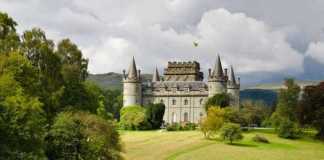Yemen sits in the extreme south of the Arabian Peninsula and has been at the crossroads of different civilisations from its very origins. In ancient times, this was home to the Queen of Sheba. It borders both Saudi Arabia and Oman while its maritime borders are with Eritrea, Somalia and Djibouti in Africa. Yemen’s coastline is extensive, 2,000 kilometres (1,250 miles) and its importance today is based upon that coastline which stretches west to the Red Sea.
The population is approaching 35 million with the capital, Sanaa its largest city. Prior to the adoption of Islam, Yemen had adopted Christianity. In more recent times, Yemen was part of both the Ottoman and British Empires. It split into two in 1967 but the two states united in 1990 to form the republic of today. That is not universally accepted and Yemen is suffering from ongoing conflict both from separatists and because of poverty and unemployment.
Yemen is among the least developed countries in the world. In recent years, famine seems to be ever-present with the ongoing conflicts a problem in solving its humanitarian needs. There is oil and natural gas which make up the majority of the government’s revenue while coffee is the best income provider from the agricultural sector. City life is difficult with unemployment figures worrying yet there is a preference for the population to live in cities rather than rural areas. The opening of the Suez Canal in the 19th Century transformed world shipping, cutting the times from Asia though to Europe dramatically. For that fact alone, Yemen is off huge strategic importance.
Contents
Cities In Yemen
1- Sanaa
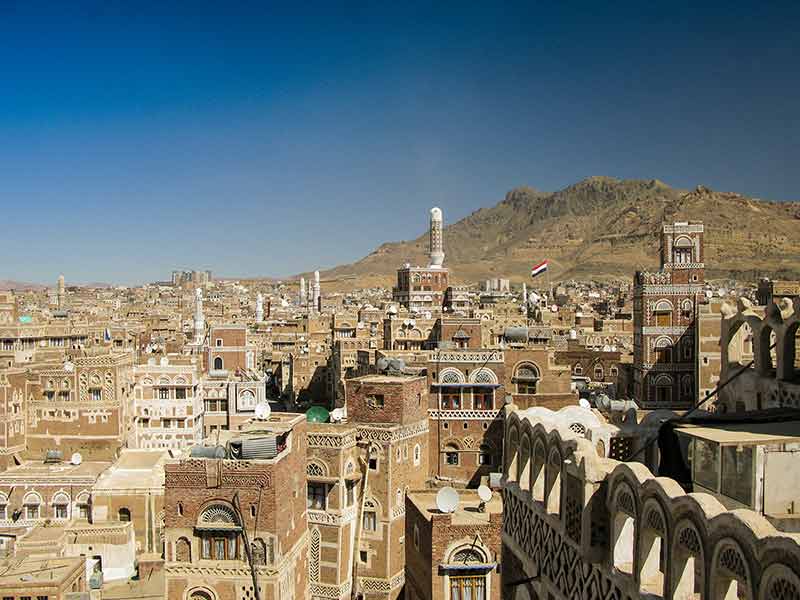
Sanaa is Yemen’s capital and largest city.
Its population is around 3.25 million at 2,300 metres (7,500 feet) above sea level in the Sarawat Mountains, its old town is a UNESCO World Heritage Site known for its interesting architecture.
The Al Saleh Mosque is the most significant landmark in the city.
The major problem the city faces its water.
Its aquifer is dwindling with water being drawn at three times the rate at which it is being replenished.
If that rate continues, Sanaa may run out of water by the end of the decade.
It is not just a problem of quantity, the quality of the water, especially for drinking leaves a lot to be desired.
2- Aden
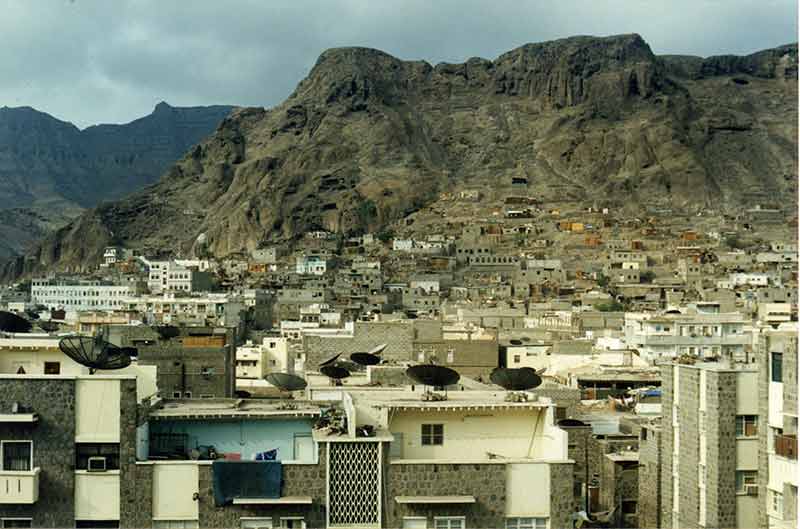
Aden in the south is the closest city to the Red Sea, and hence the Suez Canal, so it’s hugely important as a transport hub.
Its population is just in excess of 1 million, making it Yemen’s second city.
Its trading history dates back centuries.
When the British ran this region, Aden was comfortably the most important city in the country.
It has a large natural harbour and reservoirs provided the city with water as early as the 14th century.
BP owned a refinery and tanker port which were turned over to the Yemeni government in 1978.
During the period before 1990 when the two Yemens united, Aden was the capital of South Yemen.
3- Taiz
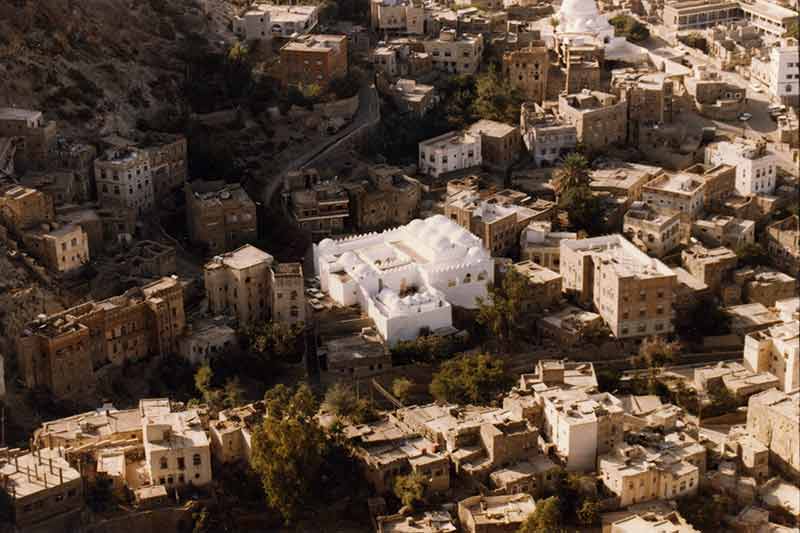
Taiz is a city of around 950,000 inhabitants, at 1,400 metres (4,600 feet) in the south west highlands.
The current internal conflict is having a major impact on the city, however, visitors will enjoy its old quarters where brown brick houses feature.
The brown bricks contrast to the whitewashed mosques, the most important being Ashrafiya, Mua’tabiya and Mudhaffar.
The Cairo Citadel is another significant landmark and the Governor’s Palace on high at 450 metres (1450 feet).
Yemen’s most famous mountain, Jabal-Saber, overlooks the city and there are magnificent panoramas over Taiz from its summit.
That summit incidentally is almost 3,000 metres (9,840 feet) above sea level.
The Mocha Coffee produced locally has a significant export and internal market.
In addition, Taiz is at the heart of mango, pomegranate, citrus fruits, banana and papai production.
Local fertility also allows for the production of vegetables, cereals and onions.
Cheese is another product from the rural areas around Taiz.
Unfortunately, nothing is currently immune for the conflict.
4- Al Hudaydah
The main port on the Red Sea, Al Hudaydah is Yemen’s fourth city with a population of 750,000.
Trade in Al Hudaydah included the export of coffee, cotton and dates.
Around 70% of Yemen’s imports and the vast majority of its humanitarian aid passes through its port.
Its name was first mentioned in the middle of the 15th century and its importance increased when the Ottomans took the region in the 1520s.
In the 19th century, it was at the heart of the slave trade, largely in Ethiopian peoples.
The Germans used Al Hudaydah as a base for communications between German East Africa and Europe.
Despite extensive fires in 1961 destroying large parts, the city still has plenty of places of historical significance including around 100 old mosques.
5- Mukalla
Mukalla sits on the Gulf of Aden, 480 kilometres (300 miles) east of the city of Aden.
The population of this port is just short of 600,000.
Its main market is a hive of activity and well worth visiting if you are travelling in the region.
The port has limited capacity for large vessels and you will see a number of fishing boats anchored there.
There is a pipeline for tankers with tanks close to the port.
A cement factory jointly owned by Yemen and Oman offers another employment facility.
In terms of landmarks, the old town has the Sultan’s royal palace while old guard towers are there for all to see.
6- Seiyun
Seiyun lies in the middle of Hadhramaut Valley around 360 kilometres (220 miles) from Mukalla.
It was said to be a natural resting point for travellers centuries ago because there was a small refreshment spot run by a woman called Seiyun, hence the city’s name.
As it grew, it absorbed a number of villages but there are still other sizeable settlements within the valley, Shibam and Tarim notably.
Its most notable landmark is the Seiyun Palace built by the Sultan of Kathiri a century ago.
It is made of stones and mud and looks over the city market where traders come from throughout the valley.
7- Ibb
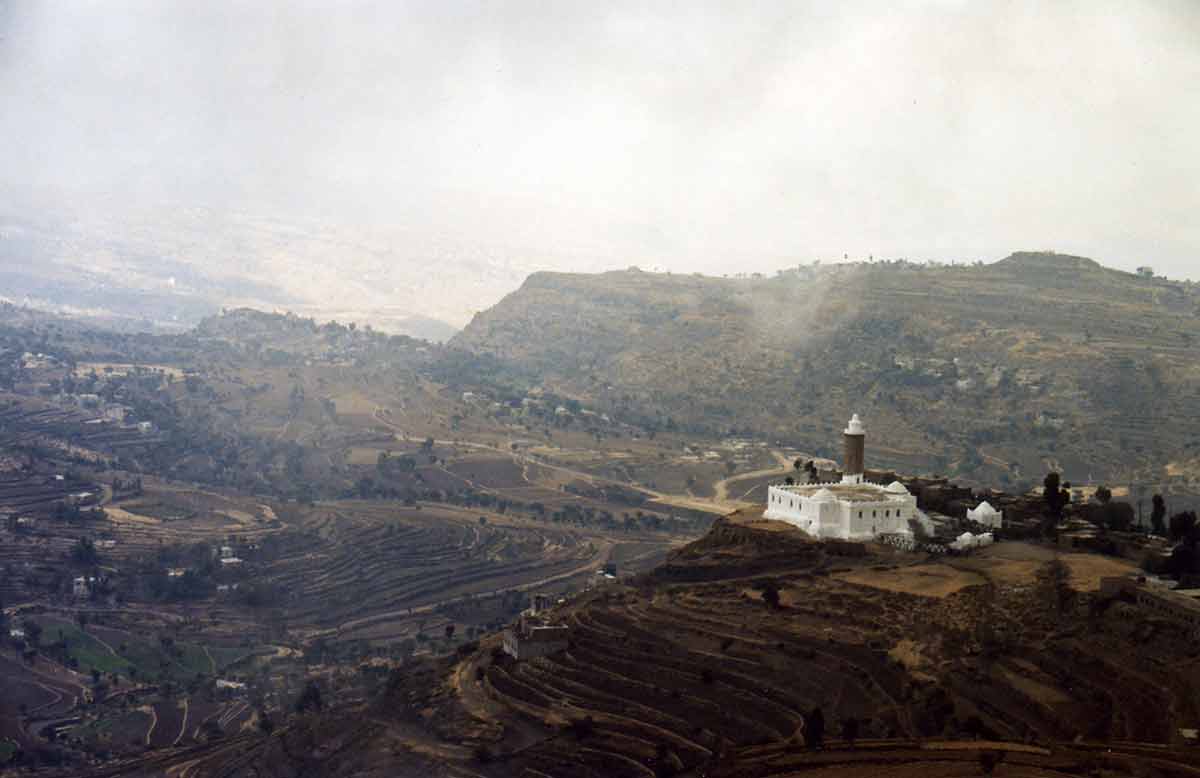
Ibb is 194 kilometres (121 miles) south of the capital Sanaa but closer to Mocha, 117 kilometres (73 miles) south west.
It is on a mountain ridge but the surrounding land is very fertile.
Nicknamed “The Land of Green”, Ibb has a population of just over three-quarters of a million.
You will be struck by the towering stone houses as you arrive in Ibb.
Stained glass windows and geometrical friezes will also catch your eye.
Ibb’s most important mosque dates back to the time when Ibb was within the Ottoman Empire.
Other mosques and a fortress are other features.
An ancient overhead aqueduct still remains today.
8- Dhamar
This city stands at an altitude of 2,400 metres (7,900 feet) in the south west highland region of Yemen.
Sanaa lies 100 kilometres (62.5 miles) to the north.
It is an important Islamic and Arabic cultural centre with the Great Mosque its most prominent landmark.
The city existed in a much smaller form before the birth of the Prophet Muhammad.
There is evidence that it was home to several scientists and Islamic scholars over the centuries.
This is volcanic land and the distinctive colours stretch 80 kilometres (50 miles) to the east.
Unlike many ancient settlements, there are no old walls around for defensive reasons.
Dhamar is situated on open plains.
9- Amran
Amran is less than an hour by road north west of Yemen’s capital, Sanaa.
Its population is just in excess of 90,000.
It predates the arrival of Islam, a centre of the Bakil people.
A fortress was built under the Sabaean Kingdom.
Bronze plaques from that period are now in the British Museum, having been discovered in the 19th Century.
Carved stones from those early days are remnants of ancient palaces and temples with a large inscription still in view on the city’s western gate.
Amran’s position on plains made it difficult to defend hence it lost any significant importance to nearby al-Jannat.
However, from the 14th Century, it starts to be mentioned again.
10- Sayyan
Sayyan is south east of Sanaa with an infrastructure that improved in the last two decades of the 20th Century with the help of a Swedish company which collaborated with the government to lay electricity lines.
The result was the building of a hospital, school and mosque.
Its growth to a population of 70,000 is partly attributed to the development of the infrastructure.
Its cost of living is relatively high in Yemen terms but that is the price for modernity.
11- Sabid
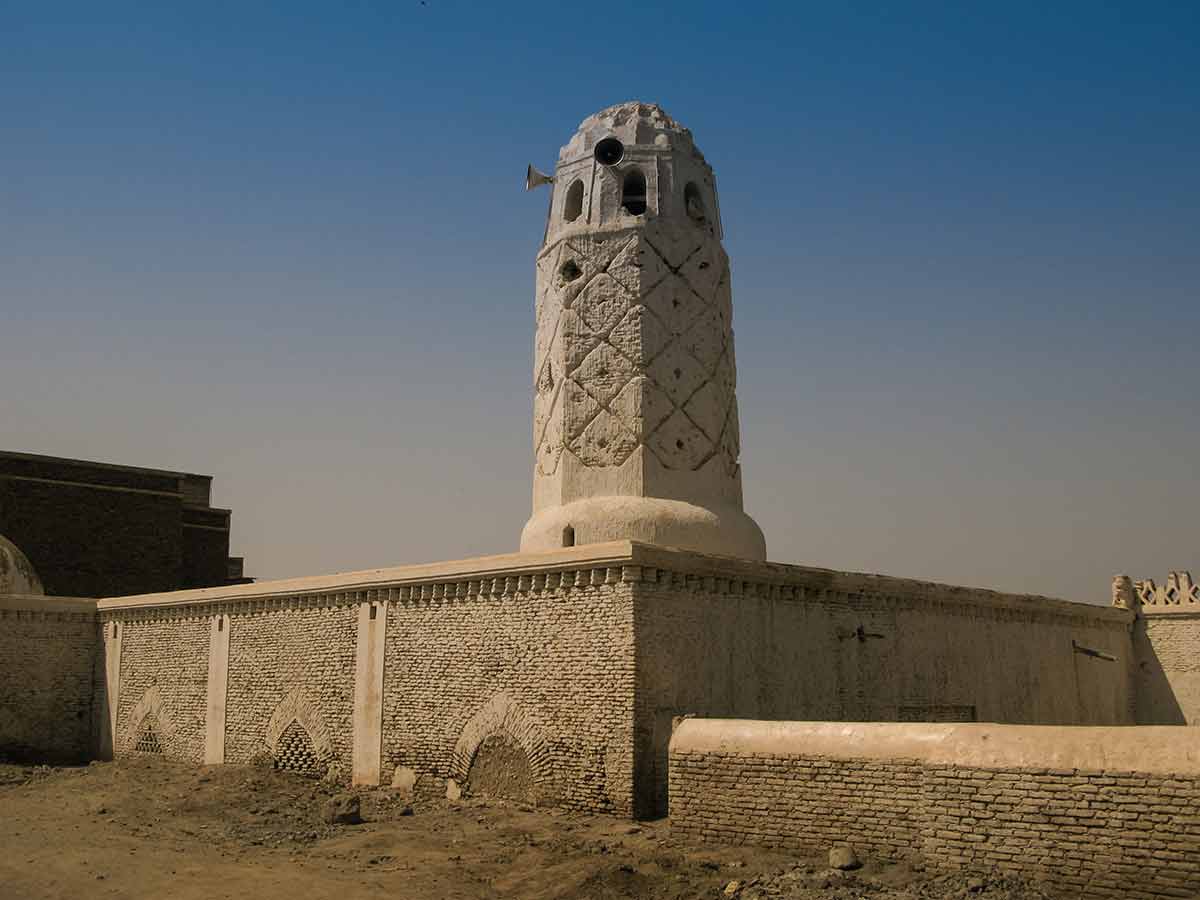
Sabid is one of Yemen’s oldest cities.
It’s on the western coastal plain and became a UNESCO World Heritage Site in 1993 although that status has been under threat in recent years.
It was initially just a village but grew and took the name of the nearby wadi (variously Sabid or Zabid) to the immediate south.
One of Prophet Muhammad’s companions, Abu Musa al-Ashari, the builder of an early mosque is associated with Sabid.
The city you see today dates back to the 9th Century and Muhammad ibn Abdallah ibn Ziyad, who founded the Ziyadid Dynasty.
It performed the role of regional capital though successive dynasties as the city grew with Sabid on the route between Aden and Mecca.
The al-Ashair and Great Mosques were centres of Islamic learning.
Sabid was the scene of many struggles but in the 14th Century, it had more palaces, religious institutions and gardens than any other Yemeni city.
It still has the largest concentration of mosques today.
The population is a little more than 50,000 yet the city’s UNESCO status is under threat because of the amount of concrete building that fills almost half the city.
In addition, other important sites are in a poor state of upkeep and repair.
12- Saada
Saada was the ancient capital of the north west, in the Serat Mountains at 1,800 metres (5,900 feet) above sea level.
Its population is just short of 52,000.
It was an early mediaeval city and the place where the Shite branch of Islam first developed.
The longest reigning dynasty within Yemen was here, the Rassid, which ran from the 9th Century until the 20th Century.
Saada is the base of the Houthis and where the movement was formed.
Their rebellion, which is ongoing, began two decades ago and the Yemeni Government has failed to get any control over the immediate region.
13- Zinjibar
A port on Yemen’s south-central coast, Zinjibar is on the delta of the Abyan with its name coming from the Persian language.
It is a resort with a permanent population of 20,000 some of whom make their living from fishing, others cotton production and trading.
The port has a long history of trading, especially with the Far East.
Late in the 12th Century, it was destroyed by Abdel Nabi Ali Mahdi Yoosuf, but rebuilt.
The 15th Century pottery at the Mazda archaeological site is evidence but again it was destroyed, being revived in the 19th Century.
Islamist militants briefly took the port in 2011 while four years later it came under Houthi control and it was not until 2016 that the government became fully in control.
14- Ash Shir
This coastal town in the east is walled, with an attractive sandy beach.
Boats can anchor but there is no port as such.
Its economy involves the export of fish oil and its souqs (markets) are interesting places to walk around, observing the activity.
Trade has always been important and that took place as early as the late 8th Century when it exported frankincense to places as far away as China.
Ambergris was another export over the years.
Its importance waned in the 19th Century when Mukalla assumed the role of the region’s major port.
This region was also known for its pottery which was traded as early as the 10th Century.
Over the centuries, it has been a place of conflict, with the Portuguese eying the territory.
Yemenis who sought a new life in East Africa are known as Shihiris because that was the port from which they left Yemen.
15- Hajjah
Hajjah is around 130 kilometres north west of Sanaa, 1800 metres (5950 feet) above sea level.
Today’s population is almost 54,000.
There were numerous forts in the region in the Middle Ages.
The name of the city relates to the “haj”, the pilgrimage that Muslims make to Mecca.
The province of the same name has the Red Sea as its western border.
16- Hadibu, Socotra
Socotra is the largest island of the archipelago with its capital, Hadibu.
The population is around 50,000 with the major settlements on the north coast.
Most of the other islands are uninhabited with less than 1,000 of the 50,000 population living other than on Socotra.
The archipelago is 380 kilometres (205 miles) to the south of the Arabian Peninsula and 240 kilometres 9130 miles) east of Somalia on the African continent.
Its wildlife and flora are largely endemic and it has been said that Socotra is “the most alien-looking place on Earth.”
The island measures 132 kilometres (82 miles) long and 42 kilometres (26 miles) wide and In 2008 UNESCO declared it a World Heritage Site because of its endemic nature.
17- Lahji
Lahji between Ta’izz and Aden was the capital of a protectorate under the British Empire until the Sultan was expelled in 1967 and it became part of South Yemen.
It is on the Wadi Tuban Delta and is a pilgrimage site for those visiting the shrine of al-Salih Muzahim Ja’far during the month of Rajab, the 7th month in the Muslim calendar.
It was a trading place famous for its coconuts.
However, it is jasmine that it is known for today with trade throughout the whole of Yemen.
It has a powerful long-lasting fragrance and as such is regarded as the best in the country.
18- Al Bayda
Al Bayda is the capital of the governate of the same name, 210 kilometres (130 miles) south east of Sanaa and has a population just short of 30,000.
It suffered an Al-Qaeda militant attack in 2014 but the militants were ultimately repelled.
However, there has been subsequent fighting between the government and the Houthis.
It is of strategic value because it is the gateway to the oil and gas reserves of the Marib Province.
19- Mokha
Mokha is an important port city of the Red Sea and it takes its name from the Mocha coffee which historically was the port’s main export despite not being grown there.
Indeed, it came from Ethiopia for onward sale.
Mokha traded in other commodities as well.
It was under Ottoman control for long periods in its history and its law demanded that all Red Sea ships had to report there to pay duty on their cargo.
20- Ataq
Ataq is in the deep south east of Yemen, 458 kilometres (285 miles) from Sanaa.
It is generally flat yet its altitude is approaching 1200 metres (almost 4,000 feet).
Its population is 37,500 and the city has been described by Lonely Planet as “not at all like an inland Yemeni town.”
The Shabwa Museum is very interesting, telling the story of the region over centuries.
- 21 Incredible Landmarks in Egypt
- 20 Things To Do In Dubai
- 20 Beaches in Dubai
- 20 Things To Do In Oman
- 8 Things To Do In Jordan With Kids
- 7 Places To Visit In Egypt
- Green Planet Dubai
- Dubai Desert Safari
- 20 Cities in Jordan
- 20 Landmarks in Jordan
- 20 Things To Do In Amman
- 20 Things To Do In Beirut
- 20 Cities in Yemen
Plan Your Trip

Rent A Car – Find the best car rental rates at Discover Cars. They compare car hire companies to provide you with the best deal right now.

Find A Hotel – If you’re curious about this article and are looking for somewhere to stay, take a look at these amazing hotels.
